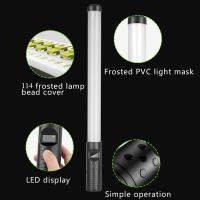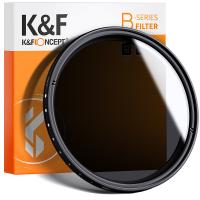How Digital Cameras Work ?
Digital cameras work by capturing light through a lens and converting it into digital signals that can be stored on a memory card. When you press the shutter button, the camera's image sensor captures the light that enters the lens and converts it into electrical signals. These signals are then processed by the camera's image processor, which converts them into a digital image that can be stored on a memory card. The quality of the image depends on the resolution of the image sensor, which is measured in megapixels. The higher the resolution, the more detail the camera can capture. Digital cameras also have various settings and features that allow you to adjust the exposure, focus, and other aspects of the image. Some cameras also have built-in filters and effects that can be applied to the image before it is saved. Overall, digital cameras have revolutionized the way we capture and share images, making it easier and more convenient than ever before.
1、 Image capture process
Image capture process is the fundamental process that digital cameras use to capture images. The process involves the use of a sensor that converts light into electrical signals, which are then processed by the camera's image processor to produce a digital image. The sensor is made up of millions of tiny light-sensitive cells called pixels, which capture the light that enters the camera through the lens.
The latest point of view on the image capture process is that digital cameras are becoming more advanced and sophisticated, with higher resolution sensors and faster image processors. This means that they can capture more detail and produce higher quality images than ever before. Additionally, many cameras now feature advanced autofocus systems, which use sophisticated algorithms to track and focus on moving subjects.
The image capture process also involves the use of various settings and controls, such as aperture, shutter speed, and ISO, which allow photographers to adjust the amount of light that enters the camera and the speed at which the sensor captures it. These settings can be adjusted manually or automatically, depending on the camera and the photographer's preferences.
Overall, the image capture process is a complex and intricate process that requires a combination of advanced technology and skilled photography techniques. As digital cameras continue to evolve and improve, we can expect to see even more advanced and sophisticated image capture processes in the future.
2、 Sensor technology
Sensor technology is at the heart of how digital cameras work. The sensor is a device that captures light and converts it into an electrical signal that can be processed by the camera's electronics. There are two main types of sensors used in digital cameras: CCD (charge-coupled device) and CMOS (complementary metal-oxide-semiconductor).
CCD sensors were the first type of sensor used in digital cameras and are still used in some high-end models. They work by capturing light and storing it in a grid of tiny capacitors. The charge in each capacitor is then read out and converted into a digital signal. CCD sensors are known for their high image quality and low noise, but they are also more expensive and consume more power than CMOS sensors.
CMOS sensors are now the most common type of sensor used in digital cameras. They work by capturing light and converting it into an electrical signal using a grid of photodiodes. Each photodiode is connected to a transistor, which amplifies the signal and sends it to the camera's electronics. CMOS sensors are less expensive and consume less power than CCD sensors, but they can be more prone to noise and have lower image quality.
The latest advancements in sensor technology include backside-illuminated (BSI) sensors, which move the wiring to the back of the sensor to allow more light to reach the photodiodes, and stacked sensors, which stack the photodiodes and electronics on top of each other to reduce the size of the sensor and improve image quality. Additionally, some cameras now use multiple sensors to capture different types of light, such as infrared or ultraviolet, to create more detailed and accurate images.
3、 Image processing
Image processing is the process of manipulating digital images using mathematical algorithms and computer software. It involves a series of steps, including image acquisition, image enhancement, image restoration, image compression, and image analysis. The process of image acquisition is done through digital cameras, which capture images using a sensor that converts light into electrical signals.
Digital cameras work by using a sensor to capture light and convert it into digital signals. The sensor is made up of millions of tiny pixels, each of which records the amount of light that hits it. The camera then processes these signals to create a digital image. The quality of the image depends on the number of pixels in the sensor, as well as the quality of the lens and other components.
The latest point of view in digital cameras is the use of artificial intelligence (AI) and machine learning algorithms to enhance image processing. AI can be used to automatically adjust settings such as exposure, focus, and white balance, as well as to remove noise and improve image quality. Machine learning algorithms can also be used to recognize and classify objects in images, making it easier to organize and search through large collections of photos.
In conclusion, digital cameras work by using sensors to capture light and convert it into digital signals, which are then processed to create a digital image. Image processing involves a series of steps, including image acquisition, enhancement, restoration, compression, and analysis. The latest point of view in digital cameras is the use of AI and machine learning algorithms to enhance image processing and improve image quality.
4、 Lens mechanics
How digital cameras work is a complex process that involves several components working together to capture and store images. One of the most critical components is the lens mechanics, which determines the quality and clarity of the image captured.
The lens mechanics of a digital camera work by focusing light onto a sensor, which then converts the light into an electrical signal that is processed and stored as an image. The lens itself is made up of several elements, including glass or plastic lenses, that work together to bend and focus the light onto the sensor.
In recent years, advancements in lens technology have led to the development of more sophisticated lenses that can capture higher quality images with greater clarity and detail. For example, some digital cameras now feature lenses with multiple elements that can adjust their position and shape to optimize the focus and clarity of the image.
Additionally, advancements in software and image processing technology have also played a significant role in improving the quality of digital images. Many digital cameras now feature advanced algorithms that can automatically adjust settings such as exposure, white balance, and color saturation to produce images that are more accurate and true to life.
Overall, the lens mechanics of a digital camera is a critical component that plays a significant role in determining the quality and clarity of the images captured. As technology continues to advance, we can expect to see even more sophisticated lenses and image processing algorithms that will further improve the quality of digital images.





































